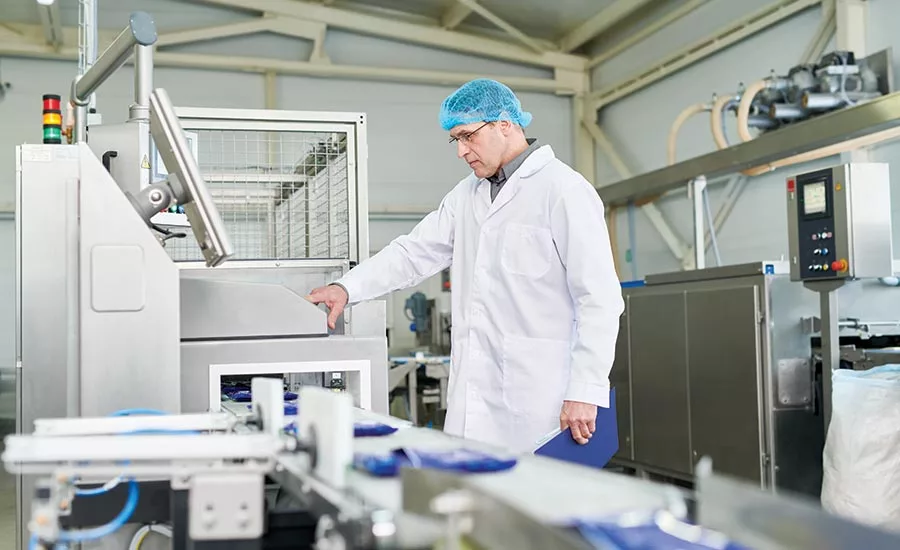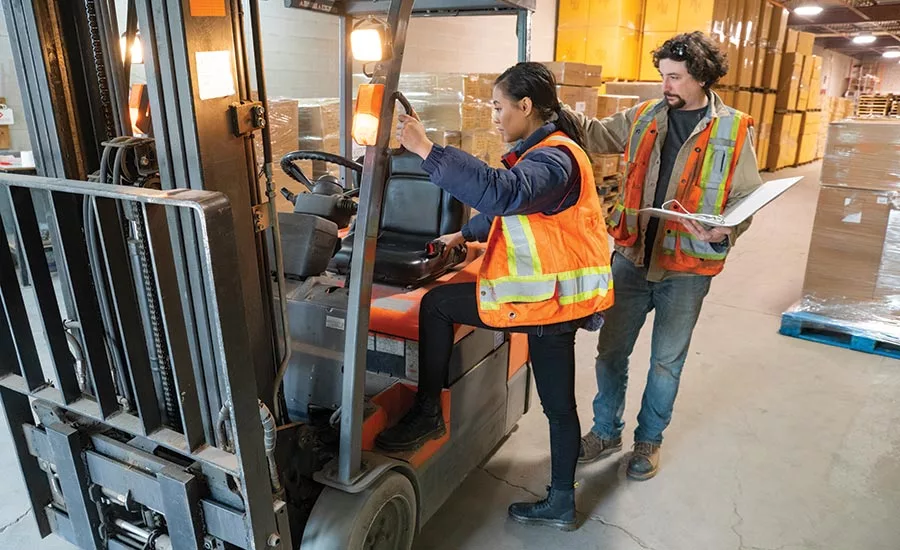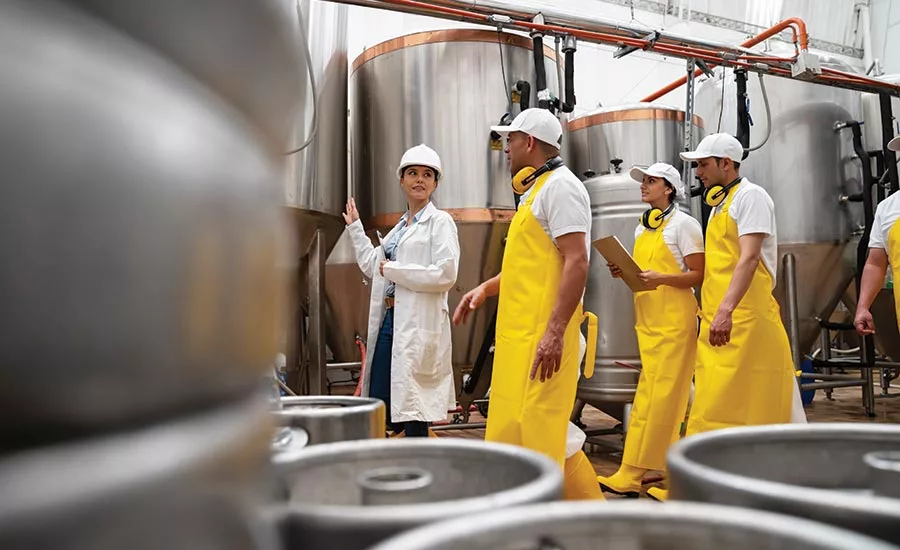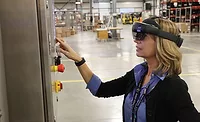Training plays a part in employee happiness and retention

Training programs for food and beverage employees need to be comprehensive and effective, including training on inspections and other quality control measures. Experienced employees can help train newer employees through each step of the process.
All photos courtesy of Getty Images



Every employee has a training story.
Some of them are good. But most of them aren’t, and they usually revolve around training being boring or irrelevant. In some cases, training is outdated or obviously from the past. What that all adds up to is employees who do training because they have to, not because they want to.
Employee training is a cornerstone of an effective processing operation, as it covers everything from how to operate equipment to staying in compliance with food safety and quality requirements, both internal and external. But as processors struggle to find and keep qualified employees, it is also a benefit that can help keep employees happy and more willing to stay. While it takes time, effort and resources, developing a good training strategy and programs is an investment that will always pay off.
“There is a significant shortage of young and qualified professionals entering the food industry,” says Stephanie Lopez, vice president of operations—Americas, AIB International. “To better engage this segment of the workforce, processors must adapt not only their training, but also their thinking. We know from public research on millennials and Gen Z that they are purpose-driven, so having a mission like food safety can have meaning and align with their values. By prioritizing their commitment to a food safety culture, processors can successfully attract, retain and develop that next generation.”
Every processor handles training differently, because every processor does things in a different way. But there are some core tenets to an effective training program, and new technology and methodologies allow processors flexibility in how, when and where employees are trained.
To put an effective training program in place or improve a current program, processors need to keep in mind several factors, such as who will lead training efforts, how training responsibilities will vary depending on whether it’s regulatory or job-specific training, and what methods will be used to ensure training is an ongoing effort to help employees keep succeeding. A “fire and forget” model may check the boxes but won’t help employees improve their skills and knowledge in the future.
Article Index:
Training the trainers
When employees are hired, human resources and department managers will have a checklist of what training they need in the early days of their employment. Broadly speaking, the human resources side will often be topics such as compliance with company policies, job requirements, time off and the availability of health and wellness programs. Department managers will have specific training requirements as well, ranging from how employees do their day-to-day jobs to regulatory requirements.
These topics can be—and often are—divided up in different ways among different departments depending on how a company defines which business unit is responsible for various aspects of employee education. The first step is to spell out training requirements and define training roles to ensure that employees receive the training they need in a timely manner.
“Having a detailed plan is crucial and outlining what an employee needs to get accomplished by position is the best approach,” says Tiffany Donica, FSQA solutions architect, SafetyChain Software. “Developing training checklists or utilizing training software can make this task more manageable. The key to ensuring that training is successful is to have a detailed plan, ensure that the employee understands the expectations, give them the appropriate time/available resources and review where each employee is at in the process regularly.”
Developing that training plan, adopting a verification process and updating both regularly is critical to implement successful training. Jobs in food and beverage processing range from highly skilled positions that people will inhabit for a long time to high-turnover, labor-intensive positions that require regular hiring to keep filled as employees move up or move on. With a tight labor market and strict regulatory requirements, keeping the employees up to speed on what they have to know to do their jobs is a challenge.
That is especially true now and in the near future as an aging workforce starts to retire in greater numbers, says Jeff Chilton, vice president, consulting, Intertek Alchemy.
“Job-specific training is critically important for all skills to make sure processors have trained employees to meet general production requirements,” says Chilton. “Processors must start addressing this as the aging workforce has to be replaced with new generation workers. It‘s a challenge to turn institutional knowledge from experienced employees into documented SOPs (standard operating procedures) and training programs that can be used to train newer employees.”
A training culture
At FONA International, a suburban Chicago researcher and developer of flavorings, employee training is a core part of the company’s commitment to employee satisfaction. The company regularly appears on numerous best places to work lists and has a high workforce retention rate.
According to its own research, FONA spends 32% more on training and development than comparable companies. That commitment to training is not just because it’s required, but because of the company’s focus on creating cultures that empower employees to succeed, says Barb Pugesek, director, customer and culture excellence, FONA.
“Because of our emphasis on audit readiness, on product safety and quality in general, whatever the baseline requirements are, we say, ‘How do we create a culture? A food safety culture, a personnel safety culture,’” says Pugesek.
FONA defines the training requirements for each position and assigns responsibility for them to different units within the company depending on what is involved in each aspect of training. Training is divided into different categories, and specific training within those categories is handled by the appropriate business unit.
“If it’s job- and role-related, it’s handled at the departmental level, although there are cross-references for things that are common for people who might work in a laboratory environment, or forklift training, or that kind of stuff,” says Pugesek. “At the corporate level, it’s our human resources team in addition to people like myself who are finding other educational material to either bring in or reference to support aspects that are critical to our business success, like manager and supervisor development, basic business acumen skills, leadership excellence.”
Employees are required to complete 40 hours of continuing education per year, which is not only a requirement, but a benefit for employees. In addition to training on their specific day-to-day responsibilities, employees can take classes on topics that are related to their jobs. Pugesek cites one example of an employee having the ability to take a dairy class at the University of Wisconsin, which helps the person learn not only for his or her current role, but also helps develop a more well-rounded skill set and knowledge base for overall career goals.
In addition to the baseline training and continuing education, FONA also has ongoing training efforts that are focused on identifying and correcting production, quality and food safety issues on an ongoing basis.
“They do very specific training on our manufacturing floor,” says Pugesek. “We focus on real-time addressing; we have an internal auditing team that walks around, and when they see something, they’re doing spot training on that. Then they’ll address it as a topic that will be brought up for reinforcement in training.”
New training tools
Being able to offer that kind of real-time training requires flexibility and mobility, and vendors are adapting to that in their training offerings. Intertek Alchemy (formerly Alchemy Systems) provides a number of training solutions that are widely used in the industry (including at FONA), and, much like processors themselves, is constantly re-evaluating and adapting its training programs to meet the challenges created by the industry’s workforce demographics.
Intertek Alchemy recently launched its Playbook program, which is a mobile platform that allows processors to create their own training based on what’s happening on the plant floor. Processors can take video of production and add questions to develop a training course on how to comply with best practices, operating requirements and regulatory requirements. They can also track which employees are qualified to fill specific roles and which employees have not yet completed all the training required to fill those roles.
“Progressive companies are using these methods to make training more fun, engaging and customized to their specific operations and needs,” says Chilton.
As more employees who were raised on mobile and digital platforms come into the workforce, mobile platforms are playing a bigger role in training. Employees are comfortable with using the training programs because of their familiarity with mobile devices, and employers can use the platforms to focus more on real-time practical applications of training. This offers greater flexibility because instead of focusing on a classroom setting, training can be conducted on the production floor, with resources literally at hand to show how a specific task or role should be performed.
Technology is also offering processors the ability to conduct training in a virtual setting. AIB International’s VirtualInspector is a training simulator that places trainees in a virtual food production facility and presents them with a number of scenarios. Users identify trouble spots and the correct food safety procedures to resolve potential issues.
“This encourages food safety teams to not only identify issues, but correctly resolve them by understanding the solutions,” says Lopez.
In addition to virtual technology, communications technology is helping processors provide better training. Platforms such as Google Hangouts, GoToMeeting and BlueJeans allow training to be conducted with personnel in multiple locations. A trainer at corporate headquarters in Dallas can conduct a session with employees in Seattle, Miami and Boston simultaneously, which helps ensure training is consistent from facility to facility. It also allows employees to share their insights with their counterparts in different locations, which leads to better information sharing across the entire company instead of just one location at a time.
“Hearing how one facility interpreted the material or questions that they have can lead to another facility providing insight and the sharing of best practices between facilities, which is not always done since it is hard to get all of your team members from each facility in one central location on a frequent basis,” says SafetyChain’s Donica.
These tools not only allow for better sharing of information across a company, but also offer more flexibility in who is conducting the training. With a tool such as Ignition Alchemy’s Playbook, experienced, knowledgeable employees can shoot video of how they do their jobs or help develop the questions and answers necessary to provide training information. By involving employees in the process as trainers as well as trainees, it helps get them invested in the success of training and ensuring that training is clear, concise and relevant to the demands of each specific job instead of being overly broad or unfocused. Keep in mind that the initial training should be monitored for feedback and areas of improvement for those who are conducting the training.
In other words, says SafetyChain’s Donica, you’ve got good employees, so use them as a resource for training, not just as the recipients.
“Taking advantage of senior employees in each department that enjoy training and preparing them to effectively train new employees can be extremely beneficial and ensure one single person is not overwhelmed with all of the training requirements,” she says.
The future of training
As food processing continues to adapt to workforce challenges, increased automation and regulatory requirements, training will become an ever more critical component to success. That creates challenges for processors who are already juggling chainsaws, but it also provides an opportunity to revamp and revitalize training programs so they become an integral part of employees’ experience and help them become invested in the company.
“Training will always be a critical component to assure employees are qualified and engaged,” says Intertek Alchemy’s Chilton. “Topics of training will continue to expand beyond regulatory to include skills, culture and personal development.”
FONA already looks beyond job-specific and regulatory requirements as part of its training development, says Pugesek. In addition to its standard training model of job-specific and regulatory requirements, spot training on the production floor as issues are spotted, continuing education and lunch and learn sessions, the company also devotes extensive resources to other areas of training. Among them are management and supervisor development and compiling recommended courses from outside the company for employees to consider.
In addition to that, the company focuses on ensuring employees understand how to access and effectively use support resources. Those include information on life skills, estate planning, financial wellness and mental health resources. While many companies offer similar resources, FONA works to ensure that employees know how to take advantage of them when they are needed.
“If it’s something that’s likely to keep a person up at night, whether it’s finances or parenting or mental health or something like that, we’re making sure that we’re providing opportunities here for people to learn more about that and address that,” she says.
When it comes to developing better training for job and regulatory roles, focusing on the training model itself and the topics it covers offers opportunities for processors to provide employees with more resources to succeed in their roles and explore opportunities for new ones. Much of that development is or can be software driven, which gives processors a tool for developing training that is engaging and effective instead of simply checking off the boxes.
“I foresee more facilities really looking at software platforms to help them develop and execute training programs,” says Donica. “It takes a lot of work upfront to develop the facility-specific training, but these are so much more effective and better received by the employees as they see familiar pieces of equipment and processes.”
The more detailed and informative training can be, the more likely it is to be effective, says AIB International’s Lopez. Don’t just tell employees what they should do; show them how to do it and why it matters.
“Ideal training merges job-specific training and regulatory requirements,” she says. “When delivering job-specific training, the focus is often on what needs to be done. When this training is supported with the ‘why’ behind the activity, including the regulatory requirements, the employee is able to see the bigger picture and is more likely to adopt appropriate behaviors.”
Take off the training wheels
Training is an essential part of processing and operations, and companies devote significant time, money and resources to developing, updating and maintaining their training. To get the most bang for their buck, processors should focus on developing comprehensive, effective training models that keep employees engaged and proactive in learning instead of simply going through the motions because their HR file has to have a record that they completed the training.
Software and other tools, such as mobile training apps, can help with that, but the largest factor in a successful training program is the company’s commitment to ensuring it is relevant, informative and engaging. Employees can tell the difference between training courses that only exist to fulfill a requirement and those that are designed to provide them with resources they need to be more effective at their jobs, and they are much more likely to gain a benefit from the latter than the former.
Ultimately, training is part of a company’s culture, and viewing it as such gives processors the opportunity to use it as an effective tool for developing, attracting and keeping a qualified workforce.
“Training is essential to having a confident and efficient workforce and with higher turnover rates it is hard to keep up,” says Donica. “Taking the time to get a solution that will work for your organization and fit the needs of your facility and employees will be a huge benefit.”
Learn more about technology and process innovations in the food & beverage industry
For more information:
SafetyChain Software, www.safetychain.com
AIB International, www.aibinternational.com
Intertek Alchemy, www.alchemysystems.com
FONA International, www.fona.com
Looking for a reprint of this article?
From high-res PDFs to custom plaques, order your copy today!







